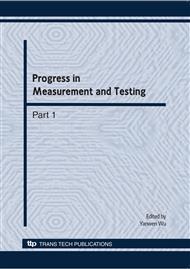p.291
p.297
p.303
p.313
p.319
p.324
p.328
p.335
p.341
A Novel Network Service Mode of Geospatial Information and its Prototype System
Abstract:
This paper proposes a novel digital earth platform framework, which is a application, service and decision-making support systems of geospatial data acquisition, storage, transmission, conversion, processing, analysis, retrieval, expression and output as a unified body, the core of which is to deal with geospatial data for spatial geographic information network service Geo-Browser/Geospatial Information Server (G/S) mode and Hyper Geographic Markup Language (HGML). Depth understanding and analysis of platform architecture, this paper realizes of digital earth platform prototype – U-Star based on the geospatial information network service G/S mode, the platform has the merits of C/S mode that full use of client resources, efficient to deal with the client data, as well as the advantages of B/S mode that the unified client and convenient to access network. This platform is a new server which can cope with massive geospatial information and a solution which can provide efficient service. It has already been applied into many fields, such as the digital tourism service system, the time sequence analysis of Wenchuan Earthquake, the real-time video monitoring based on the digital earth platform and the intelligent processing and exhibition of remote sensing data. The result indicates that the perfection of space, time and complexion of the geospatial information network accessing will effectively improve the quality and efficiency of the shared data, which has very important theoretical significance and bright prospect of application.
Info:
Periodical:
Pages:
319-323
Citation:
Online since:
May 2010
Authors:
Price:
Сopyright:
© 2010 Trans Tech Publications Ltd. All Rights Reserved
Share:
Citation:


